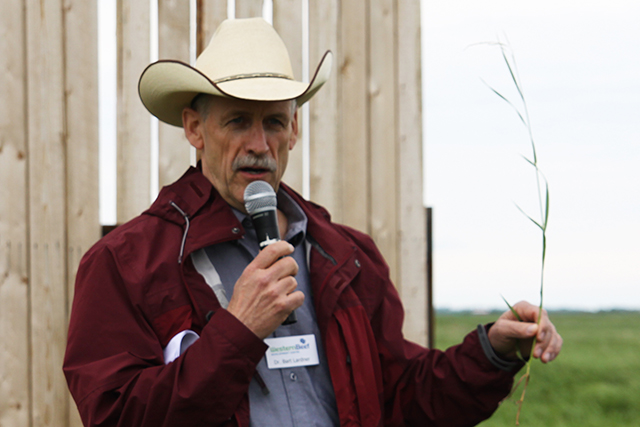
Next generation will have field day with LFCE
With years of experience behind their names, Bart Lardner and Paul Jefferson are seasoned pros in their fields.
By HenryTye GlazebrookLardner is a senior research scientist at the Western Beef Development Centre (WBDC) and an adjunct professor at the University of Saskatchewan (U of S). Jefferson is a longtime forage researcher and was WBDC’s vice president of operations until he retired from the role in 2016.
With each passing season the two scientists are wondering more and more about the future. “We’re seeing it every year at our field day: a younger audience,” says Lardner.
It’s those young audiences — the ones who are still on farms or in university — that the two established researchers have in mind when they discuss the Livestock and Forage Centre of Excellence (LFCE) — an initiative that will unite all aspects of the beef cattle industry.
In the process, the LFCE will bring about exciting new possibilities for researchers, faculty, producers, industry — and yes, those very same students who will one day shape agriculture in Western Canada and beyond.
“We’re seeing the change happening at the industry level and we think the LFCE is a great opportunity for the research community to gear up and prepare for the next generation of scientists and technologists to come in and do the work that will be available for the next generation of beef producers who are still kids,” Jefferson says.
They also see the centre as an exciting opportunity to bring together research, government and industry — establishing a way to easily exchange information about research projects and future goals.
“I think this is the one chance to get it right, this is the one chance to do it correctly and bring together government, university and industry and make sure you’re listening to all three partners,” Lardner says.
It’s these strengthened partnerships that Jefferson says will lead to a greater output of research. He points to forage as an area that, while sometimes overlooked by industry outsiders, could benefit from the new “efficiencies and synergies” made available because of the centre.
“It doesn’t sound sexy. It’s not a breakthrough in DNA or something like that — but sample drying, grinding and processing for forage research is the backbone of everything you do,” Jefferson says.
He adds that the LFCE will help to mitigate some of the natural expenses that come hand in hand when working with beef cattle for the purposes of research and teaching.
“Beef research is expensive. It’s expensive to keep cows. It’s expensive to have the overhead of facilities and labour to keep live animals for research. Really, how do you make that cost effective? You utilize that herd as many ways as possible for research — as many projects as possible,” says Jefferson.
Ultimately, Lardner and Jefferson both believe that the LFCE will have a lasting impact — solidifying the U of S and Saskatchewan as leaders in beef cattle and forage research.
“This LFCE idea and vision is for the next 50, 60 years. It’s for the next set of researchers that we’re going to train in Saskatchewan. We’re going to attract the best — recruit the best research scientists and faculty. We’re just fortunate that we’re going to end our careers under this new model. I’m optimistic that it’s going to be the best institution in all of Canada,” Lardner says.
“If you take the very long-term view of this project, it is about training the next generation of beef producers and industry experts.”
